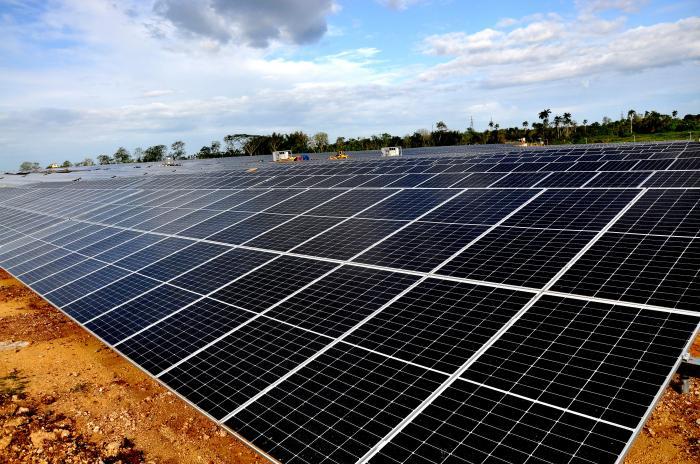
On May 13, 2025, the 4th Ministerial Meeting of the China-Celac Forum was successfully held in Beijing. China and Latin American and Caribbean (LAC) countries, spanning mountains and oceans, met to address friendship, development and revitalization.
CHINA-LAC COOPERATION: MUTUAL BENEFITS AND SHARED GAINS
Although China is geographically distant from LAC, friendly exchanges between the two sides go back a long way. As early as the mid-16th century, Chinese ships loaded with silk, porcelain and spices sailed from China's Fujian, crossed the Pacific Ocean, and arrived in Mexico's Acapulco, bringing back to the East corn, potatoes and chili peppers from the Americas. Thus began China and LAC trade and civilizational exchanges, via the Pacific Maritime Silk Road.
After the founding of New China, Cuba became, in 1960, the first country in the Western Hemisphere to establish diplomatic relations with New China, opening a new chapter in China-LAC relations.
Since the beginning of the new era, President Xi Jinping has attached great importance to China-LAC ties, and has personally led its development. Since 2013, he has visited the region six times, received many leaders from the region in China with whom he held intensive meetings on bilateral and multilateral occasions, together promoting the entry of ties into a new phase of equality, mutual benefit, innovation, openness and well-being for the peoples.
DEEPENING POLITICAL TRUST
At the China-LAC leaders' meeting in Brasilia in July 2014, President Xi Jinping proposed, for the first time, building a community of shared future between China and LAC, which has received a broad and positive response.
In recent years, there has been a new leap in the positioning of Sino-Latin American ties; 26 countries in the region have established diplomatic relations with China.
Cuba and China are building the first community of shared future at the bilateral level in the Western Hemisphere; the positioning of Sino-Brazilian ties has been raised to the level of joint construction of the community of shared future for a more just world and a more sustainable planet; and the all-weather, all-weather strategic partnership with Venezuela has been established. The "golden content" of the China-LAC relationship has been steadily rising.
BOOSTING COMMON DEVELOPMENT
More than 20 countries in the region have joined the Belt and Road family, ten have signed cooperation plans with China, and five are China's free trade partners.
In 2024, the trade volume between China and LAC reached a historic US$518.4 billion, double that of a decade ago. For many consecutive years, China has maintained its position as LAC's second largest trading partner, and is the largest trading partner of several countries, such as Brazil and Peru.
More and more typical products of the region, such as Cuban rum and Chilean cherries, have reached the tables of Chinese families, and Chinese electric cars are present on the streets of LAC. This is a vivid demonstration of the vitality of economic and trade cooperation between the two sides.
China has implemented more than 200 infrastructure projects in the region, providing millions of jobs. Projects such as the multipurpose terminal at the port of Santiago de Cuba, the Talca-Chillán section of Chile's Route 5, and the National Library of El Salvador have been put into operation, with tangible benefits to the local population.
GROWING CULTURAL EXCHANGE, GROWING FRIENDSHIP
Both China and LAC have rich historical traditions and deep cultural assets. From the Great Wall to Machu Picchu, from the Mogao Caves to the Pyramid of Chichen Itza, the splendid ancient civilizations of China and LAC enhance each other.
The China-LAC Civilization Dialogue Forum has been held seven times. China has offered LAC 17,000 government scholarships and 13,000 training places.
Sixty-eight Confucius Institutes and Confucius Classrooms have been established in 26 countries in the region. "Chinese language fever" continues to rise in LAC, and many countries in the region have made Chinese New Year an official holiday. Cultural and people-to-people exchanges are growing closer.
UNITED FOR SELF-STRENGTHENING
The starting point of China-LAC relations, Cuba is also the birthplace of the China-Celac Forum (CCF). In January 2014, the 2nd Celac Summit in Havana adopted a Special Declaration on the Establishment of this Forum.
In July of the same year, President Xi Jinping and Latin American leaders jointly decided to establish the Forum, declaring a political consensus to promote cooperation. In January 2015, the first Ministerial Meeting of the FCC was held in Beijing.
Over the past ten years, with the strategic guidance of the Head of State's diplomacy and joint efforts between the two sides, the China-Celac Forum has established mechanisms of Ministerial Meeting, "Quartet" Dialogue and National Coordinators' Meeting, and has successfully held more than one hundred activities, including three ministerial meetings and sub-forums in 31 areas.
It has become an important platform for building political consensus, launching major initiatives, formulating action plans and evaluating implementation results, playing a relevant and positive role in deepening cooperation.
Amid the intensification of bloc confrontation, the resurgence of the global tariff war, and the growing uncertainty and instability in the world, China and LAC, with the 4th Ministerial Meeting of the Forum, have confirmed to the world the willingness to strengthen solidarity and cooperation, to face the challenges together.
China will work together with LAC countries, within the framework of the China-Celac Forum, to strengthen strategic articulation, deepen mutually beneficial cooperation, enhance true multilateralism, oppose unilateralism and politics of force, and promote the construction of the China-LAC community of shared future, so as to inject more certainty, stability and positive energy into the turbulent world.
*Ambassador of the People's Republic of China to Cuba








